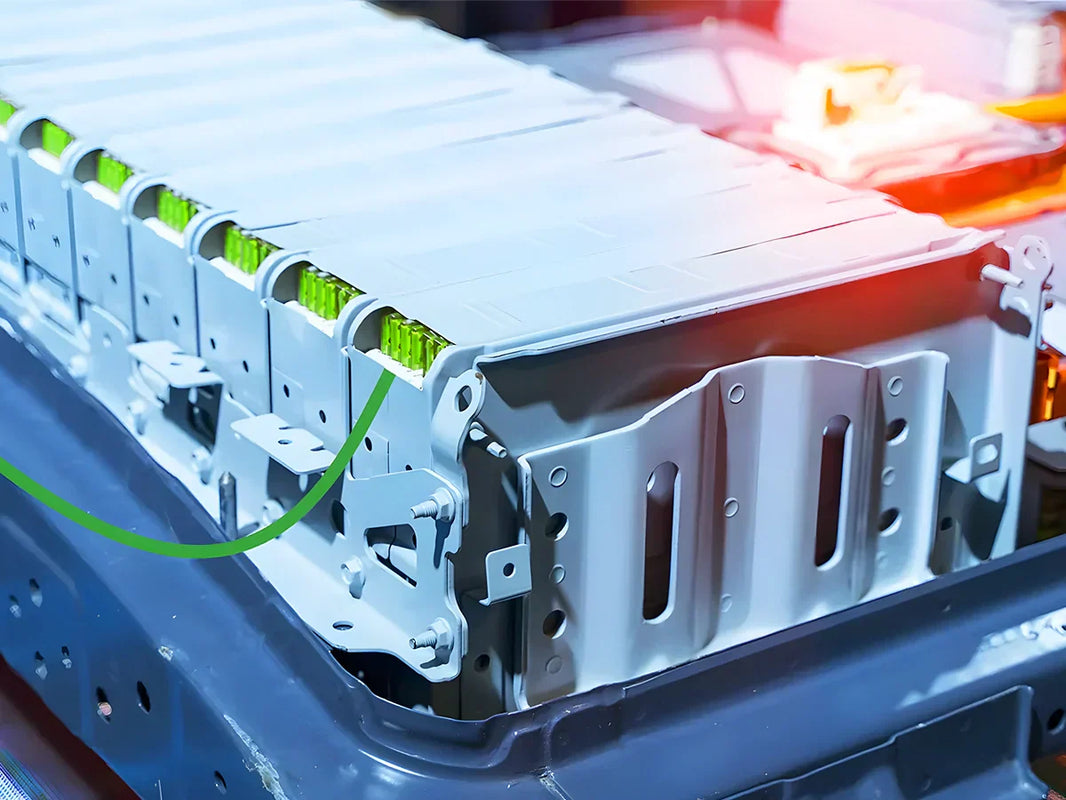
Vietnam leads the ASEAN region in both photovoltaic manufacturing and photovoltaic installed capacity.
In terms of the solar energy potential, Vietnam is endowed with unique solar resources. The total technical potential of photovoltaic power generation is high as 1,646GW, of which 1,569GW is land-based photovoltaic and 77GW is water-based photovoltaic.
In terms of installed capacity, as of July 2021, the total installed capacity of solar energy in Vietnam was approximately 19,400MWp (of which nearly 9,300MWp is household photovoltaic, accounting for nearly half), which was equivalent to 16,500MW, accounting for approximately 25% of the country's total installed electricity capacity.
In terms of manufacturing, Vietnam has particularly outstanding advantages. When Chinese photovoltaic companies go overseas, almost all of them will choose Vietnam. According to data by the Asian Development Bank in August 2023, Vietnam is the biggest solar photovoltaic supplier in Southeast Asia, accounting for 5% of global supply.
Want to know more about the latest news and developments of solar energy in Vietnam? This article will tell you everything you wonder.
Main content:
1. Resource advantages of solar energy in Vietnam
If hydropower is regarded as a renewable resource, Vietnam’s renewable resource installed capacity accounts for as high as 55% (see the figure below). Even excluding hydropower, the growth rate of wind power and photovoltaics is very rare. In the past seven or eight years, it has grown from zero, and now accounts for more than a quarter.
Vietnam's developable hydropower capacity is high as 25-38 GW, 60% of which is concentrated in the north of the country - where the industrial zones from Hanoi to the seaport are located.

As of 2020, Vietnam's hydropower installed capacity was 21,600 MW, and its power generation contribution accounted for nearly 30%. However, almost all large-scale hydropower projects of more than 100 megawatts in Vietnam have been developed, and there is no room for growth.
Vietnam is also very rich in wind power resources, mainly distributed along more than 3,000 kilometers of coastline and in the hills and plateau areas of the northern and central regions.
Research results from the World Bank show that more than 39% of Vietnam’s areas have average annual wind speeds exceeding 6m/s at a height of 65m, which is equivalent to a total capacity of 512GW. Vietnam has 8.6% of its land area with excellent potential for large-scale wind power plants, compared with 0.2% in Cambodia, 2.9% in Laos and 0.2% in Thailand. Because of this, Vietnam’s wind power is growing rapidly.
In May 2019, there were only 7 wind turbines connected to the grid in Vietnam, with an installed capacity of 331 MW. By July 2022, Vietnam had added 84 new wind farms in three years, with installed capacity soaring to more than 4,000 megawatts.
If the growth in northern Vietnam depends on wind power, the growth in southern Vietnam mainly depends on photovoltaics. Vietnam has great potential for solar energy development, especially in the central and southern regions. The average annual sunshine hours in the central and southern regions are 2,000 to 2,600 hours/year.

As of July 2021, total installed power capacity of solar energy in Vietnam was approximately 19,400MWp (of which nearly 9,300MWp was home solar power system), which was equivalent to approximately 16,500MW, accounting for approximately 25% of all installed power capacity in the country, and power generation contribution accounted for approximately 10%.
Support policies such as electricity price subsidies and tax exemptions are the key driving forces for the rapid growth of installed capacity of solar energy in Vietnam. Of course, Vietnam’s current photovoltaic installed capacity is also restricted by the aging power grid that is unable to absorb green electricity.
The Vietnamese government is determined to vigorously develop renewable energy and reflects its commitment by providing a stable and supportive environment through policies and regulations. The government has also set renewable energy targets, a proactive approach that has attracted more investors to participate in photovoltaic projects.
2. Photovoltaic manufacturing industry in Vietnam
- Trina Solar
The most active photovoltaic company investing in Vietnam is Trina Solar. Trina Solar is also the largest photovoltaic manufacturing company in Vietnam, manufacturing solar power systems that work with inverters such as 2000w pure sine wave inverter and power inverter 3000w. As early as 2016, Trina Solar established Trina Solar Vietnam Energy Development Co., Ltd., headquartered in Yen Binh Industrial Park, Thai Nguyen Province. So far, its total investment in Vietnam has exceeded US$ 500 million.
In August 2023, Trina Solar announced that its 210 silicon wafers produced in Vietnam were officially offline, with an annual production capacity of 6.5GW. Recently, Trina Solar Group also plans to implement a third-phase project with a total investment of approximately US$420 million in Yen Binh Industrial Park, Thai Nguyen Province.

- JA Solar
On August 31, 2023, JA Solar Technology issued an announcement about investing in and building the company's integrated production capacity. It will invest in the construction of a high-efficiency LFP battery project with an annual output of 5GW in Vietnam, with an estimated investment of 2.715 billion RMB and a project construction period of 10 months. In fact, Vietnam is currently the first choice for Chinese photovoltaic companies to invest.
According to reports, Chinese companies have significantly increased their investment in Vietnam in recent years, and their proportion of foreign investment in Vietnam has increased year by year. China-Vietnam investment cooperation has achieved remarkable results for solar energy in Vietnam.
From January to October 2023, Chinese companies’ direct investment in the entire industry of solar energy in Vietnam reached US$1.76 billion. In Hanoi, the capital of Vietnam, the rail train runs between high buildings and residential houses. The entire 13-kilometer journey takes only 23 minutes.
The Hanoi Light Rail Line 2 project, contracted and constructed by Chinese companies, not only greatly saves local residents’ travel time, brings a green and environmentally friendly travel experience, but also drives Hanoi’s economic development.
Bac Giang Province in Vietnam has close cooperation with China. Chinese-funded companies have invested in 171 local projects, and many Chinese photovoltaic companies have built production lines in Bac Giang Province.
3. Challenges for Chinese photovoltaic companies in Vietnam
Recently, a phenomenon that requires special attention from Chinese photovoltaic companies is that Chinese companies have begun to have competitors in Vietnam.
According to data, on November 28, Japanese electrical equipment company Fuji Solar announced that it subsidiary Toyo Solar will build a TOPCon battery factory with a capacity of 8GW in Bac Giang Province in northeastern Vietnam.
The first project will invest US$200 million and has planned production capacity of 4GW, scheduled to be completed in 2024. Toyo Solar said its TOPCon off grid solar batteries have a conversion efficiency of 24.3%. Founded in 2015, the company also currently operates another battery and component factory in Bac Giang province.
By June 30, 2024, the U.S. photovoltaic product tariff exemptions for four Southeast Asian countries, including Vietnam, Malaysia, Thailand and Cambodia, will be cancelled. In addition, countries such as Japan and South Korea have deeply penetrated Vietnam's manufacturing industry in recent years and have a certain industrial foundation. They may be able to substitute for Chinese companies.

Industry of solar energy in Vietnam is concentrated in Ho Chi Minh City, Hanoi, Bac Ninh Province, Da Nang, Haiphong, and Can Tho. These are also industrially developed areas in Vietnam. For example, there are many Japanese-owned companies in Phu Tho Province, Korean-owned companies in Long An and Bac Ninh province, and Chinese companies in Binh Duong Province.
Manufacturing industry of solar energy in Vietnam has a complete upstream and downstream industrial chain, as well as mature industrial workers that Chinese photovoltaic companies have helped cultivate locally over the years. These excellent resources are scarce resources for photovoltaic companies in Japan and South Korea.
Vietnam has experienced a power shortage 2023. The main reason was insufficient hydropower and strong industrial demand for electricity. This directly caused the chip leading company Intel to shelve its investment plan in Vietnam, and many oversea companies have begun to re-evaluate their investment and establishment of factories in Vietnam.
At the time of Vietnam's power shortage, China decided to provide Vietnam with electricity supplies for seven years. In Vietnam, the average time to complete a grid expansion project is three years. However, it only takes nine months to commission and install a solar photovoltaic project locally. This is obviously an important factor restricting the development of renewable energy such as solar energy in Vietnam.
In response, the Vietnamese government has launched a series of initiatives and projects to upgrade and expand the transmission network. By 2030, total investment in Vietnam's power grid will reach US$ 33 billion. The investment will cover the construction of new transmission lines and substations, as well as the deployment of smart grids and other emerging technologies.
Related posts: top 5 solar microinverter companies in the world, top 5 PV module companies in India, top 10 solar inverters in Australia
















